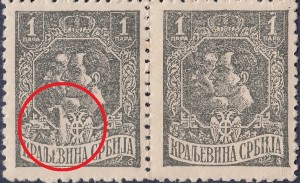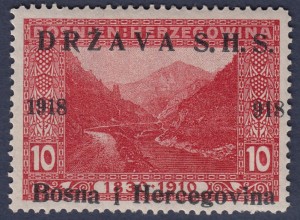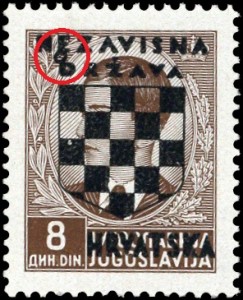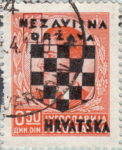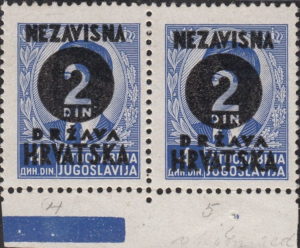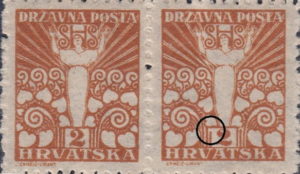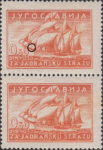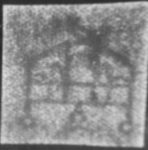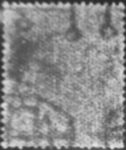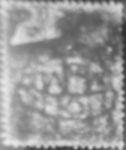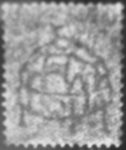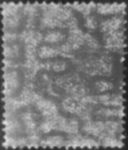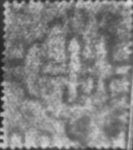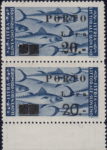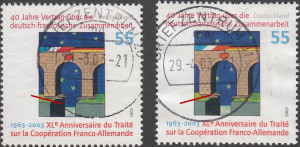Postage stamp flaws, errors and types
Varieties are stamps that differ in certain details from ordinary issue and have been actually sold to customers over the counter. Printer’s waste, trial runs (proofs) and essays are therefore not regarded as varieties. On this site, varieties are classified into three major groups:
- Constant and part-constant varieties are differences that are stable and recurring in identical form on the same fields between all (constant) or multiple (part-constant) stamp sheets of the same issue.
- Coincidental varieties result from errors in production process. They are non-uniform and ephemeral.
- Types are differences that originate from variations in materials and in ways these materials are used in production (color, paper, gum, perforation, typography, etc.) and also the differences that:
- originate from print preparation process,
- discriminate stamps between printing runs,
- are produced intentionally, or at least knowingly,
- derive from handling during printing process.
| COINCIDENTAL VARIETIES | ||
|---|---|---|
| Coincidental varieties are non-uniform and ephemeral. As they occur through coincidence each case appears to be unique. It is not possible to assess which and how many were produced nor to make a complete detailed list as they appear in countless shapes and forms. Coincidental varieties appear in all stages of production. They are: | ||
| A. Coincidental printing errors | ||
| Offset / Setoff | Gone through paper print | Impurities and air bubbles |
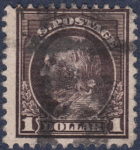 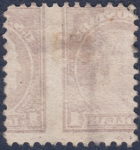 |
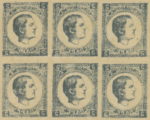 |
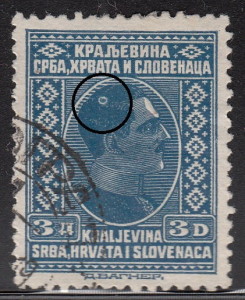 |
| During a production a part of a stamp design can be transferred from one sheet to the back of another, before the ink has dried. The design on the back is reversed and usually shifted as in case of this 1917 George Washington stamp. | Also called “transparent print”, occurs when color penetrates the paper and the design becomes visible on the back of the stamp. This error must not be confused with an offset error. | Foreign particles on a printing plate and air bubbles in color cause uninked areas on stamps. The particle might persist across more than one sheet of stamps, but it will eventually wear or fall away. |
| Inverts / Inverted printing phases | Double impression | Out of register / Shifted print phase |
 |
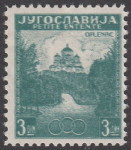 |
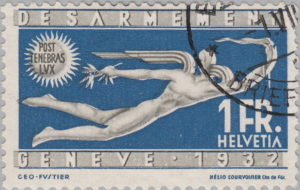 |
| This type of error occurs when in a process of printing a multicolored impression, a half-ready sheet is inserted the wrong way around in the printing press. On the second stamp shown above, the yellow impression is inverted. | A type of error when the stamp design is doubled. A double impression on this 1937 Yugoslav stamp creates a sense of dizziness. | When stamps are printed in more than one color, it is necessary to print each color separately and ensure each color overlaps the others precisely. If this is not done, the image will look fuzzy and blurred as in case of this Swiss stamp. |
| Overinking | Underinking / Dry print | Missing color / Missing print phase |
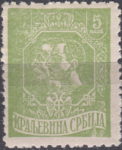 |
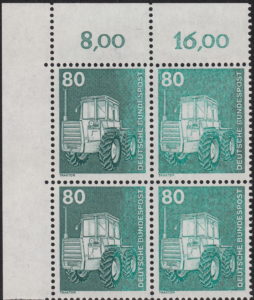 |
|
| When a printing plate is charged with too much ink a heavy impression is created that sometimes makes the design unrecognizable. Left side of this Serbian stamp is overinked leaving left denomination and inner frame design covered with excessive amount of ink | When too little ink is applied on a plate the design is faint as it lacks color and distinction. | Stamps with one or more colors missing from the design. |
| Ink smears | Wrong color | Wrong cliché orientation |
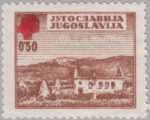 |
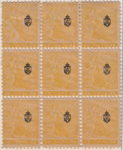 |
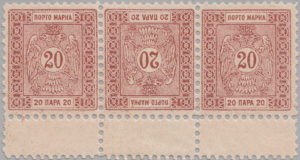 |
| A printing error where excessive ink has spread and covered portions of the stamp. On the example above, spilled red ink had mutilated the Red Cross emblem. | The error occurs when a stamp, or a part of it has been printed in wrong color. In case of 1911 newspaper stamps of the Kingdom of Serbia, one cliché of 50 para stamp was accidentally inserted to 20 para printing plate. | A type of error when a stamp is printed in a different orientation relative to other stamps in a sheet. Tête-bêche orientation is in most cases deliberate, but can also be accidental like in case of the Serbian postage due above, where a cliché of the 98th field was inserted in an upside down position. The error was soon fixed. |
| Fold over | Iris print | |
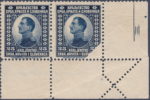 |
||
| This error results from a corner of the printing paper being folded over during the printing process. As a result, a part of the design is missing as it was printed on the back of the sheet. More images of the example above: back, folded corner. | This error occurs when more denominations, all having different colors, are being printed simultaneously on the same press sheet and during this process the colors of different denominations mix, creating thus another color. | |
| B. Coincidental overprint errors | ||
| Rotated overprint | Shifted overprint / Split overprints | Wrong color |
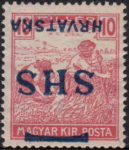 |
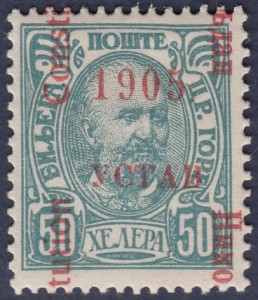 |
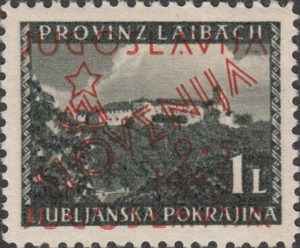 |
| The error occurs when an overprint is applied in a laid, tilted or in an inverted position. | A type of error when an overprint is displaced from its intended position in a way that a part of it spreads to the bordering stamp. Displacement can occur in any direction and in its extreme case a part of a sheet remains unoverprinted. | The error occurs when an overprint is impressed in another color. The example above shows a Ljubljana Province stamp of 1944 overprinted with new country name in red, instead of black color. |
| Wrong overprint | Offset, setoff | Gone through paper print |
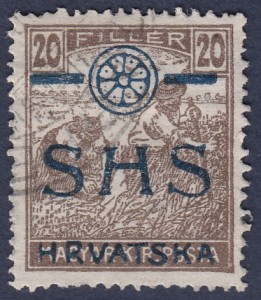 |
  |
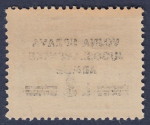 |
| An error where an overprint, intended for another stamp design is used. After WWI in Croatia, Harvesting Wheat stamps of Hungary were intended to be overprinted with Type I overprint. The example above, however, is overprinted with Type VI, intended for King Charles stamps of 1918. | A type of error when an overprint is transferred from one sheet to the back of another, before the ink has dried. The design on the back of the stamp is always reversed, can be partial or complete and usually shifted. | Strongly applied overprints in letterpress can deform the paper, enabling color to penetrate deeper, making the impression visible at the back of the stamp. This error must not be confused with an offset error. |
| Overinking | Underinking / Dry overprint | Blind overprint |
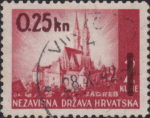 |
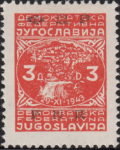 |
|
| Applying too much ink on an overprinting plate creates a dark colored, unsharp impression of overprint with thick, rounded corners and letters sometimes filled with color. | Pale and indistinctive overprint, as a consequence of too little ink being applied to an overprinting form. Underinking refers also to cases when a part of overprint is entirely missing due to insufficient inking. | Blind print is the ultimate case of underinking. In this case no color at all is being applied to the face of the stamp. It is recognizable in cases when stamps are overprinted in letterpress as the missing impression is visible on the back of the stamp. |
| Multiple overprint | ||
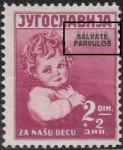 |
||
| This error is created when an overprint is impressed multiple times. A light or partial second impression is sometimes referred to as a “kiss” print. The stamp of the Kingdom of Yugoslavia presented above is such an example. | ||
| C. Coincidental perforation errors | ||
| Perforation shift / Miscut | Blind perforation | Imperforate between / Partial perforation |
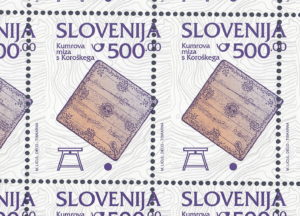 |
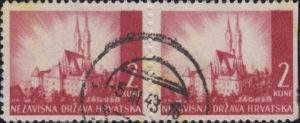 |
 |
| Movement of perforations in any direction which causes the stamp design to be split. On the example above, a perforation shift caused the inscription “M. LUCUL DELO-TISKARNA” to appear on the left side. | Impressions of perforations visible, but not fully punched out. The example of 1941 pair of 2 kuna stamps of the Independent State of Croatia has vertical blind perforation between both stamps. | The error refers to stamps with perforations missing along one edge or a margin or another stamp. The example above shows horizontally imperforate pair of stamps. |
| Double (or multiple) perforation | Misperforation / Wild perforation | Disarranged perforation |
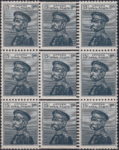 |
 |
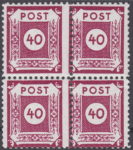 |
| Stamp with at least one extra row of perforation. A double horizontal perforation on the example above enlarged holes and thus further reduced vertical perforation bridges. | This sort of error occurs when a stamp sheet is accidentally folded over or creased while being passed through the perforating machine. | Misalignments in perforation tool that causes some stamps to be of different format: larger or smaller, wider or narrower. |
| Missing pin | Bent pin | |
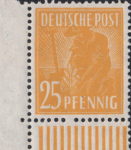 |
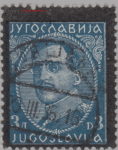 |
|
| Longer perforation bridge as a result of missing pin in perforating tool. On this stamp of allied occupation of Germany, the missing pin error occurs below letters P and F in PFENNIG. | Bent pin in perforating tool causes perforation holes to be misaligned, as on the example above. A perforation hole above letters Г and О in ЈУГОСЛАВИЈА was punched much lower. | |
| D. Coincidental paper and tagging errors | ||
| Paper crease / Paper fault | Glued / Repaired paper-roll | Phosphor band errors |
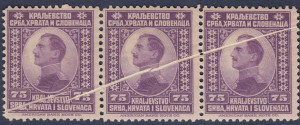 |
||
| A crease in the paper prior to printing of the stamp, which, when unfolded shows an unprinted portion of the stamp design. | This error refers to unevenness of paper due to connecting paper rolls or repairing torn rolls of paper before printing. At the splice, the paper is felt accordingly thicker as there are two layers of paper glued together. When in contact with water such stamps might break apart. | The error refers to cases where phosphor bands or coatings are partially or completely missing. |
| E. Coincidental gum errors | ||
| Printed on gum side | Gum spill | Unevenly applied gum & air bubbles |
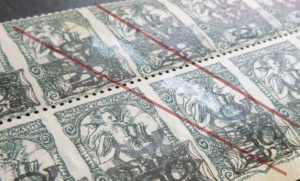 |
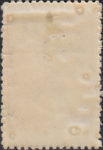 |
|
| The error refers to instances in which the stamp is erroneously printed on the gummed side. | Refers to cases when a gum from the back of the stamp is smeared to the front side. On newspaper stamps shown above, a shiny trace crossing four stamps (between red lines) is in fact gum that at some point during production process spilled to the front. | When gum of a stamp is applied unevenly, having thick and thin layers. Sometimes traces of air bubbles can be seen on thick layers. In extreme cases of uneven application of gum the whole parts of sheet remain ungummed. |

